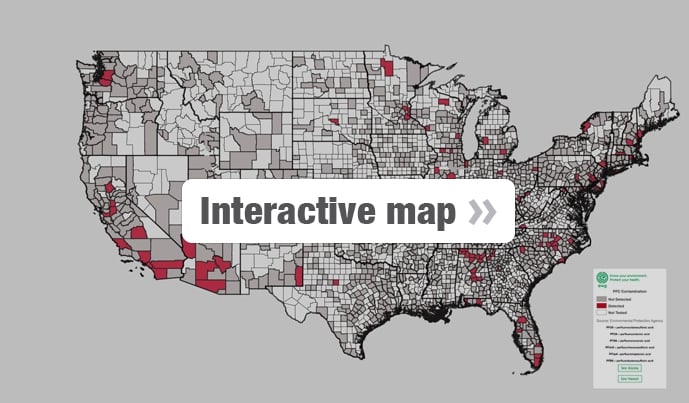
On this day in 1938, a DuPont chemist named Roy J. Plunkett in Deepwater, N.J., accidentally discovered polytetrafluoroethylene, a slippery substance remarkably resistant to water, grease and stains. DuPont patented PTFE as Teflon. To honor Plunkett’s discovery, April 6 is National Teflon Day, according to nationaldaycalendar.com, which tracks such things.
We won’t be celebrating.
Teflon became the basis for hundreds of products, from cookware to food wrappers to waterproof clothing, a brand that eventually earned DuPont $1 billion a year. The market expansion was boosted by another chemical called PFOA, which smoothed out Teflon and made it easier to work with.
The 3M Company was the original manufacturer of PFOA, but DuPont was its biggest customer for the stuff. DuPont used billions of pounds of PFOA, also known as C8, to make Teflon at its Washington Works plant near Parkersburg, W.Va.. Between 1951 and 2003 DuPont dumped or emitted more than 1.7 million pounds of PFOA into the Ohio River, unlined landfills and the air around the Parkersburg plant.
Independent research studies have linked tiny amounts of PFOA to kidney and testicular cancer, thyroid disease, reproductive and developmental disorders, compromised immune systems and many other health problems. According to internal company documents, 3M and DuPont knew PFOA was hazardous, but for decades kept it secret. In 2005, after the documents became public in a class-action lawsuit on behalf of 70,000 residents of the mid-Ohio Valley, the Environmental Protection Agency forced DuPont to phase out PFOA over 10 years.
National Day Calendar suggests marking the special day by showing off your Teflon pans, but if you’re reading this you probably got rid of yours years ago, when the dangers of PFOA first became widely known.
Who, then, should celebrate National Teflon Day?
- Not Bucky Bailey, whose mother breathed C8 fumes at Washington Works for nine months before he was born with multiple facial deformities. When she returned to work, Sue Bailey stumbled on an internal DuPont memo about a 3M study detailing deformities in lab animals whose mothers were fed C8 during pregnancy.
- Not the 3,500 other residents of the mid-Ohio River Valley who are suing DuPont in federal court for illnesses they say were caused by drinking PFOA-contaminated water. Last October, in the first case to come to trial, a jury found DuPont liable for causing Carla Marie Bartlett’s kidney cancer, awarding her $1.6 million in damages.
- Not the 98 percent of Americans who, according to tests by the Centers for Disease Control and Prevention, have PFOA in their blood from its widespread use in consumer and industrial products. Studies show the chemical can be passed through from mothers to child in the womb and in breast milk.
- Not the more than 6.5 million Americans in 27 states where an EPA-mandated drinking water testing program found drinking water contaminated with PFOA or related chemicals at concentrations up to 174 times the “safe” level indicated by the newest research.
- Not the residents of Hoosick Falls, N.Y., North Bennington, Vt., or a string of other New England villages where investigators have discovered PFOA contamination in recent months. Those towns and many others are too small to participate in the EPA testing program. That means no one really knows the true scale of nationwide PFOA contamination.
 The list could go on: babies almost 200 miles downstream from the Parkersburg plant, children in the Faeroe Islands, residents near a DuPont plant in The Netherlands, polar bears in the Arctic, dolphins in the ocean – all have been affected by the spread of PFOA and its chemical cousins. And because PFOA and its chemical cousins take decades to pass from our bodies and never break down in the environment, the problem is here to stay.
The list could go on: babies almost 200 miles downstream from the Parkersburg plant, children in the Faeroe Islands, residents near a DuPont plant in The Netherlands, polar bears in the Arctic, dolphins in the ocean – all have been affected by the spread of PFOA and its chemical cousins. And because PFOA and its chemical cousins take decades to pass from our bodies and never break down in the environment, the problem is here to stay.
All due respect to Roy J. Plunkett, who did not know the harm that would come from his discovery, but the only the appropriate way to observe National Teflon Day is with a moment of silence for its victims.




